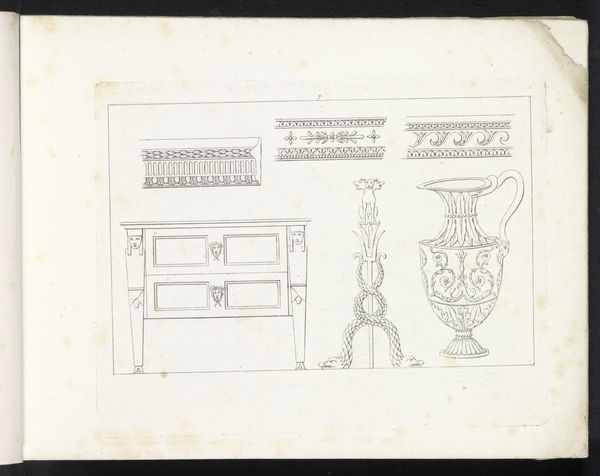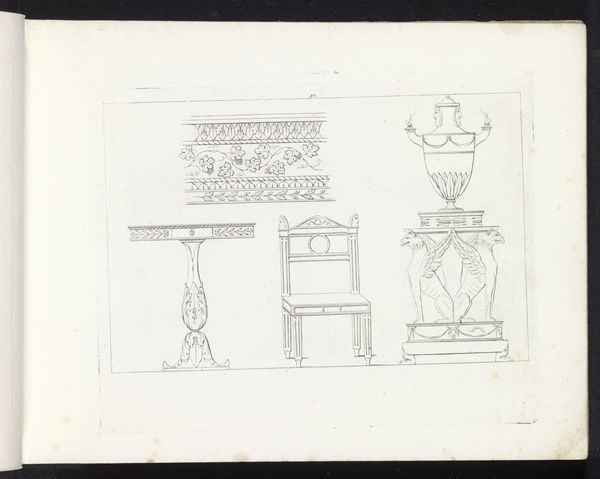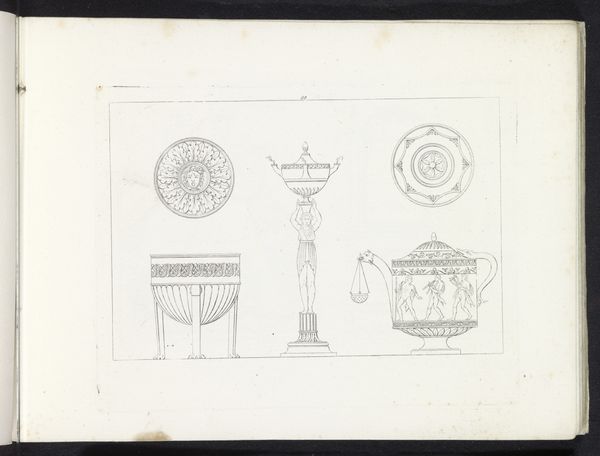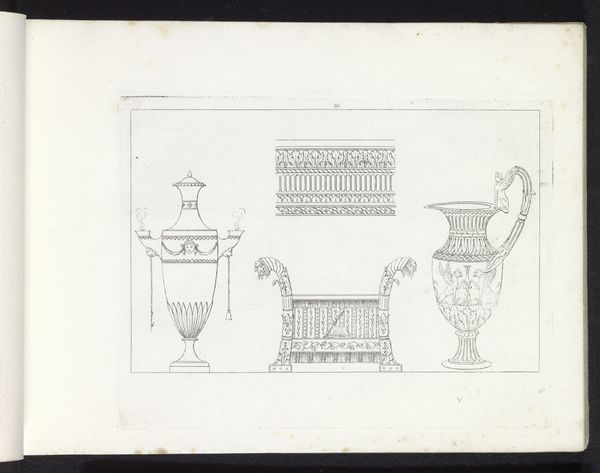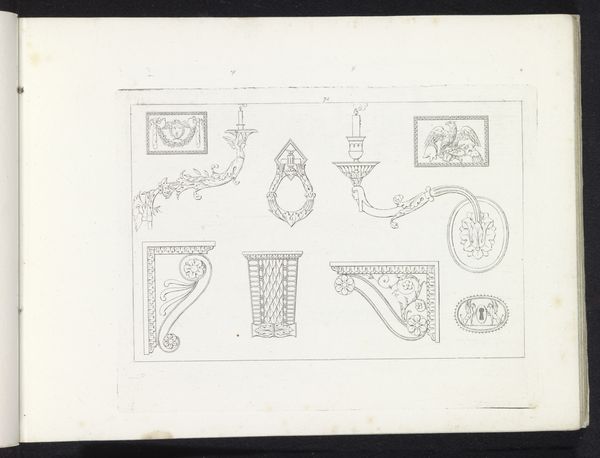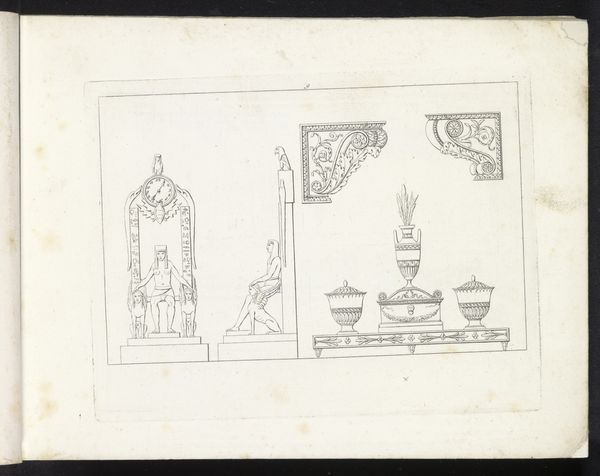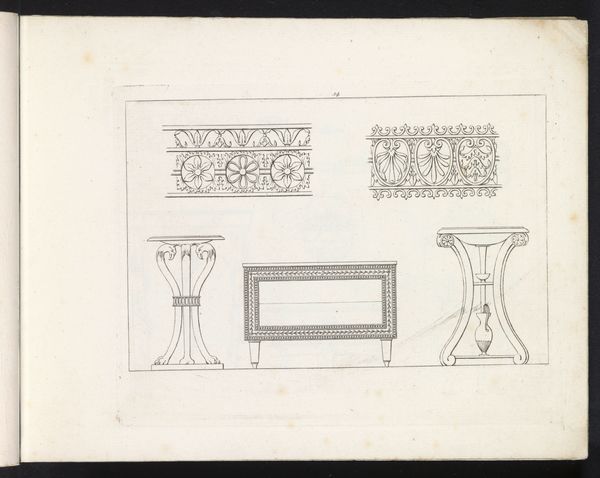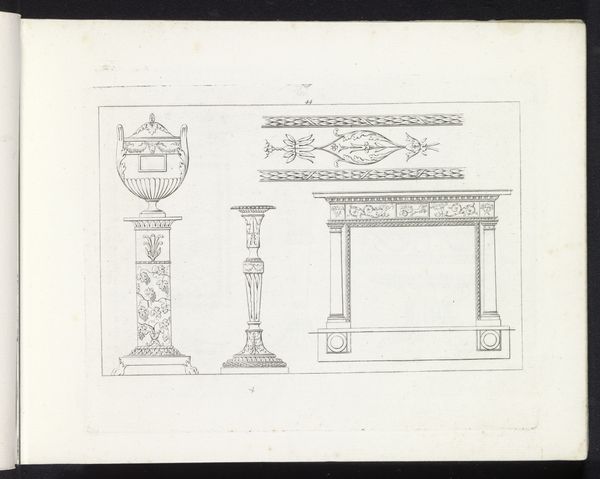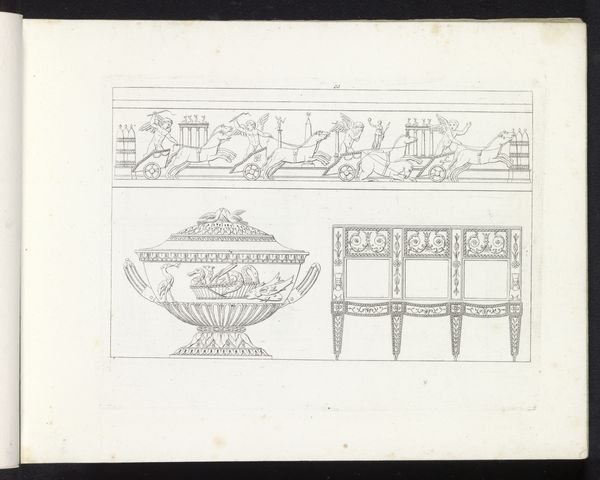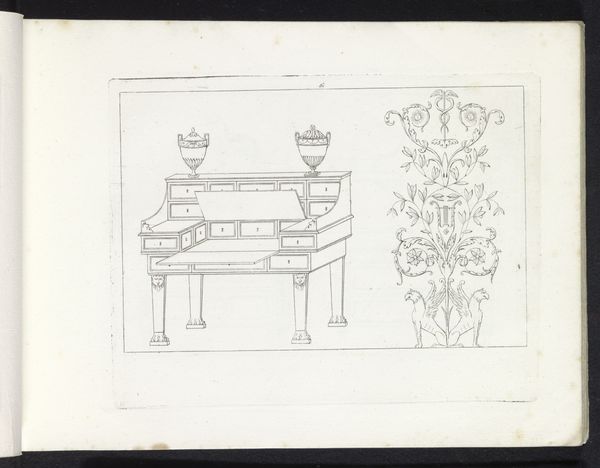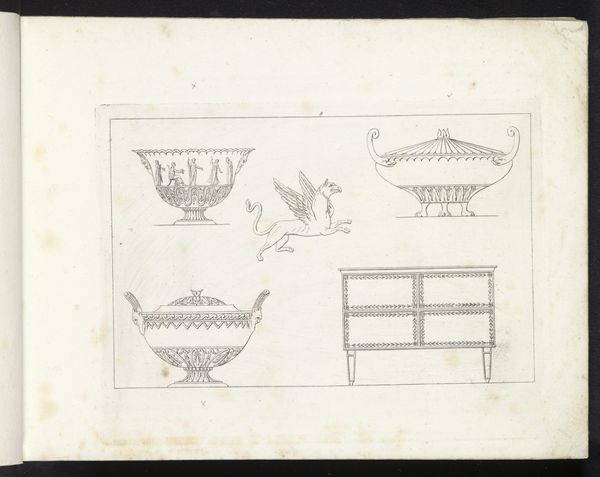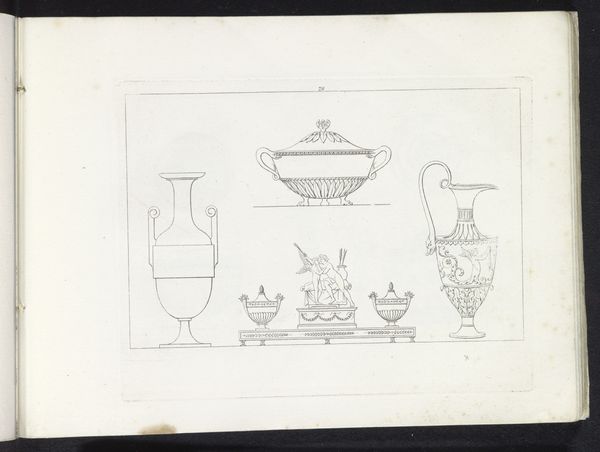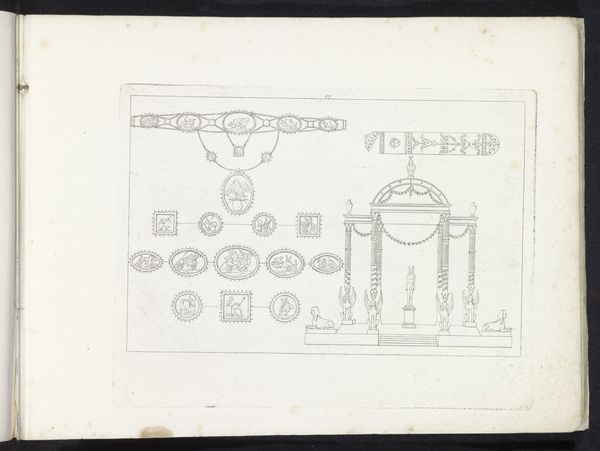
drawing, paper, ink
#
drawing
#
neoclacissism
#
paper
#
ink
#
geometric
#
decorative-art
Dimensions: height 160 mm, width 215 mm
Copyright: Rijks Museum: Open Domain
Curator: Look at this exquisite drawing by Pietro Ruga, titled "Ornamentele rand, een vaas, een schaal en een boekenkast," created around 1817. It’s ink on paper. Editor: It's very linear, spare, and strangely calming, wouldn’t you agree? There’s something almost architectural about how these objects are presented; clean lines are defining the overall structure. Curator: Absolutely, that tranquility aligns with Neoclassicism's embrace of order and rationality. Ruga presents familiar forms: a vase, a bowl, a bookcase, each resonating with ancient allusions and aspirations to wisdom. Think of those forms—they're laden with significance far beyond the everyday. Editor: I see your point. Looking closer, one appreciates Ruga’s intricate layering of patterns, specifically geometric— the strategic placement. Take for example the subtle shift from rectilinear structures in the cabinet to the smooth curves of the vase and bowl… a simple juxtaposition! Curator: Indeed. The bookcase filled with what appears to be rows and rows of books, hints at a vast reservoir of knowledge, of historical and philosophical inquiry. The ornaments are echoes of civilizations long past; each shape tells a silent story. Editor: Considering these forms presented, it reminds us of the visual culture that was deemed important for people during those times. Curator: Indeed, each line conveys a link between classical values and the intellectual pursuits of the early 19th century. It reminds us to reflect on how cultural memories are designed and preserved, consciously shaping each future with inherited visions of the past. Editor: Thinking purely formally, the drawing demonstrates how clarity of structure and understated artistry invite the mind into contemplation, allowing us to look deeply at each detail. Curator: I find it fascinating to see how the drawing acts as a bridge, linking the Enlightenment era with early 19th-century tastes, embodying ideals that resonate in society today. Editor: I'll definitely keep that in mind as I examine Neoclassical forms from now on.
Comments
No comments
Be the first to comment and join the conversation on the ultimate creative platform.
